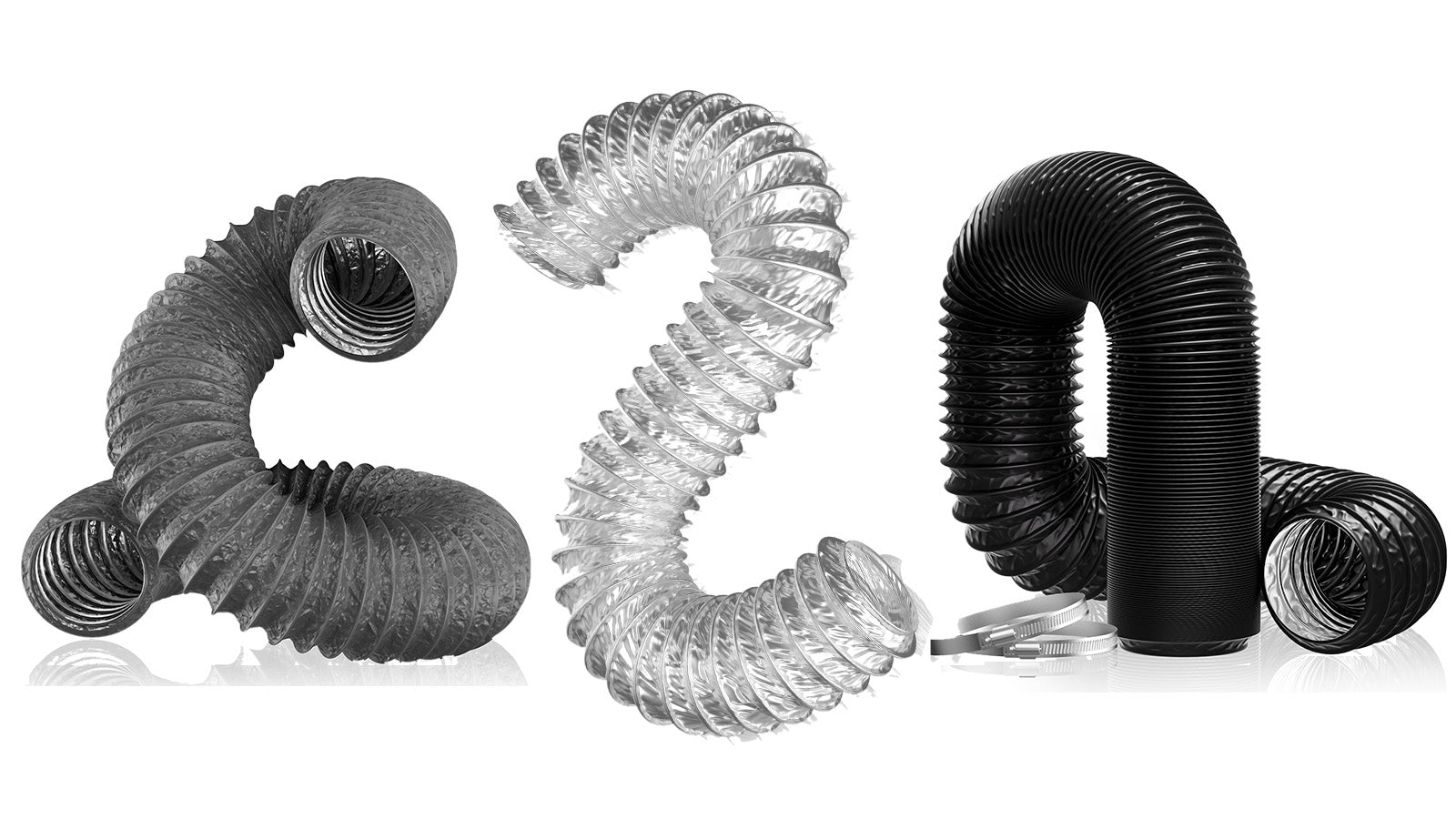When selecting the best dryer vent hose material in 2025, homeowners typically prioritize price or convenience. But the truth is, the right material makes a huge difference in safety, efficiency, and longevity. A poorly chosen vent hose can lead to higher energy bills, frequent replacements, or even fire hazards. Below is a complete star rating comparison of dryer vent hose materials in 2025, based on safety, rigidity, flexibility, etc.
Key Standards to Consider
- Size – Most dryers require a 4-inch diameter vent hose. Please make sure both the hose and the wall duct match for a secure fit.
- Rigidity – Rigid ducts allow smoother airflow, reducing lint buildup. Flexible hoses, while easier to install, may create resistance.
- Flexibility/Compression – Flexible hoses are ideal for tight spaces, but excessive compression can restrict airflow.
- Flame Resistance – Materials vary widely. Always choose hoses that can withstand high temperatures to minimize fire risks.
- Crush Resistance – A hose that resists crushing maintains airflow and reduces strain on the dryer.
- UL 2158A Rating – This safety certification is essential for materials used in dryer venting.
Dryer Vent Hose Materials
Aluminum Foil
Flexible and inexpensive, aluminum foil hoses are common but not the most durable. They can tear easily and should only be used for short connections. But they are much more fire-resistant than PVC and plastic hoses.

- Size: ★★★★★ (standard 4-inch, widely available)
- Rigidity: ★★☆☆☆ (thin, prone to tearing)
- Flexibility/Compression: ★★★★★ (very flexible, easy to install in tight spaces)
- Flame Resistance: ★★☆☆☆ (not the safest, can burn through)
- Crush Resistance: ★★☆☆☆ (easily dented or flattened)
- UL 2158A: ★★★☆☆
Semi-Rigid Metal
A strong balance between flexibility and durability. Semi-rigid hoses resist crushing and provide better airflow than foil, making them one of the top choices for homeowners.
- Size: ★★★★★
- Rigidity: ★★★★☆ (holds shape better than foil)
- Flexibility/Compression: ★★★★☆ (flexible but not as much as foil)
- Flame Resistance: ★★★★☆ (resists heat well)
- Crush Resistance: ★★★★☆ (fairly sturdy)
- UL 2158A: ★★★★★ (widely compliant)
The aluminum foil semi-rigid dryer vent hose combines both advantages above. Moreover, with a smooth interior, this dryer duct ensures efficient and safe airflow even when compressed or bent. See details here
Rigid Metal (Galvanized or Aluminum)
The gold standard in dryer venting. Rigid ducts are smooth inside, allowing maximum airflow and minimal lint buildup. They’re also the safest and most flame-resistant option, fully compliant with UL 2158A.

- Size: ★★★★★
- Rigidity: ★★★★★ (extremely strong, smooth airflow)
- Flexibility/Compression: ★★☆☆☆ (requires elbows, not flexible)
- Flame Resistance: ★★★★★ (most fire-safe option)
- Crush Resistance: ★★★★★ (nearly impossible to crush under normal conditions)
- UL 2158A: ★★★★★
Plastic
Cheap but risky. Plastic hoses can warp under heat, trap lint, and are often not UL-listed. They are generally not recommended in 2025 installations.
PVC
PVC dryer vent hoses are lightweight and easy to cut, making them convenient for tight or custom spaces. However, they are less durable and have safety limitations compared to metal options.

- Size: ★★★★☆ (available but less standardized than metal)
- Rigidity: ★★☆☆☆ (flimsy, can sag)
- Flexibility/Compression: ★★★★☆ (bends easily)
- Flame Resistance: ★★☆☆☆ (not flame-resistant; keep away from heat sources)
- Crush Resistance: ★★☆☆☆ (can collapse under weight/pressure)
- UL 2158A: ★☆☆☆☆ (rarely compliant)
Tip: If you need a quick, easy-to-install option for a small or unusual space, PVC can work. For maximum safety and long-term durability, consider our recommended dryer vent hose (details here), which is built with 2 layers of aluminum foil, much more fire-resistant than other normal PVC dryer vent hoses.
Summary
|
Size |
Rigidity |
Flexibility |
Flame Resistance |
Crush Resistance |
UL 2158A Rating |
|
| Aluminum Foil |
★★★★★ |
★★☆☆☆ |
★★★★★ |
★★☆☆☆ |
★★☆☆☆ |
★★★☆☆ |
| Semi-Rigid Metal |
★★★★★ |
★★★★☆ |
★★★★☆ |
★★★★☆ |
★★★★☆ |
★★★★★ |
| Rigid Metal (Galvanized or Aluminum) |
★★★★★ |
★★★★★ | ★★☆☆☆ |
★★★★★ |
★★★★★ |
★★★★★ |
| PVC |
★★★★☆ |
★★☆☆☆ |
★★★★☆ |
★☆☆☆☆ |
★★☆☆☆ |
★☆☆☆☆ |
Essential Accessories
- Clamps – Secure connections to prevent leaks and ensure stable airflow
- Foil Tape – Provides a heat-resistant seal. Avoid using duct tape, which fails under heat.
- Dryer Vent Cleaning Kit – Regular cleaning extends the life of your hose and keeps your dryer running efficiently.
Final Recommendation
For most households in 2025, rigid metal ducts remain the safest and longest-lasting solution. Semi-rigid metal hoses are a close second for tighter spaces. Aluminum foil is acceptable for very short runs but should be replaced frequently. Plastic and PVC options should be avoided entirely.
By choosing the right dryer vent hose material—and pairing it with proper accessories—you’ll improve efficiency, extend the life of your dryer, and most importantly, keep your home safe.



